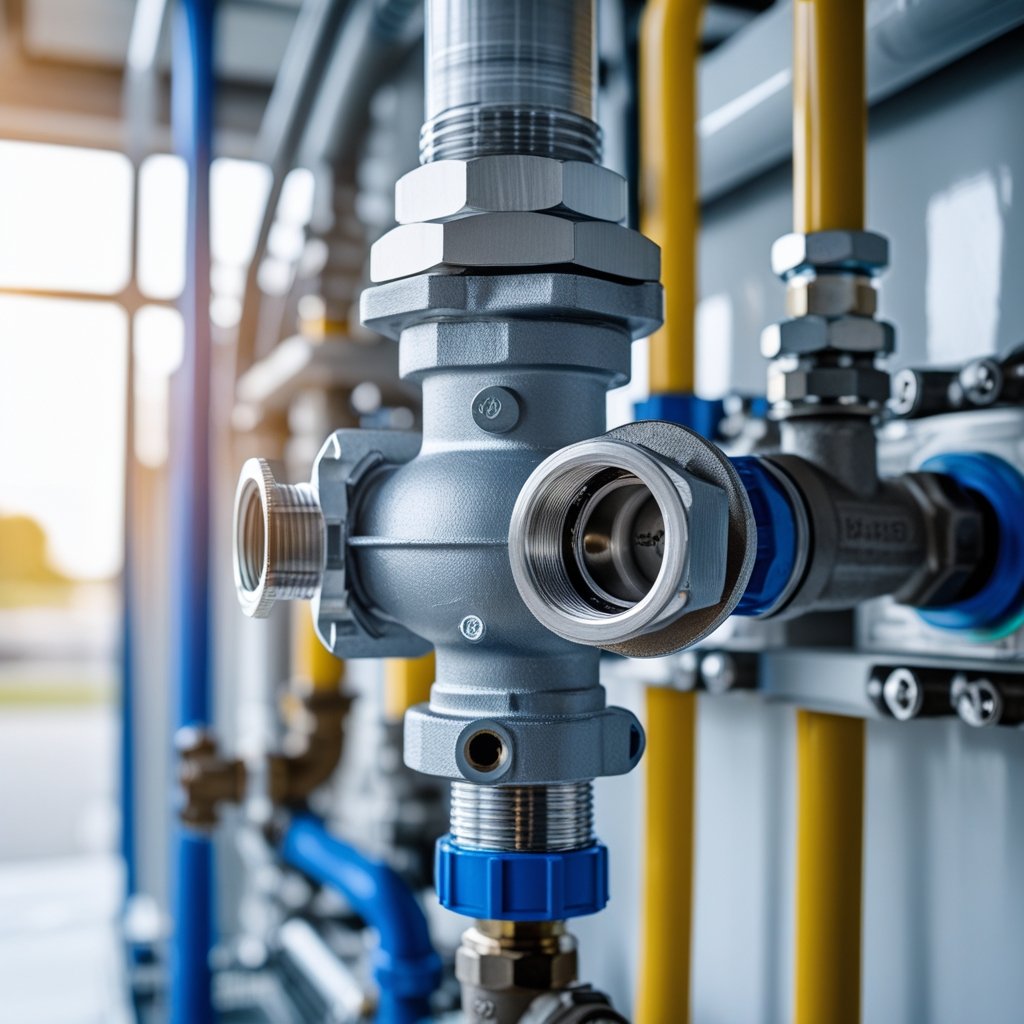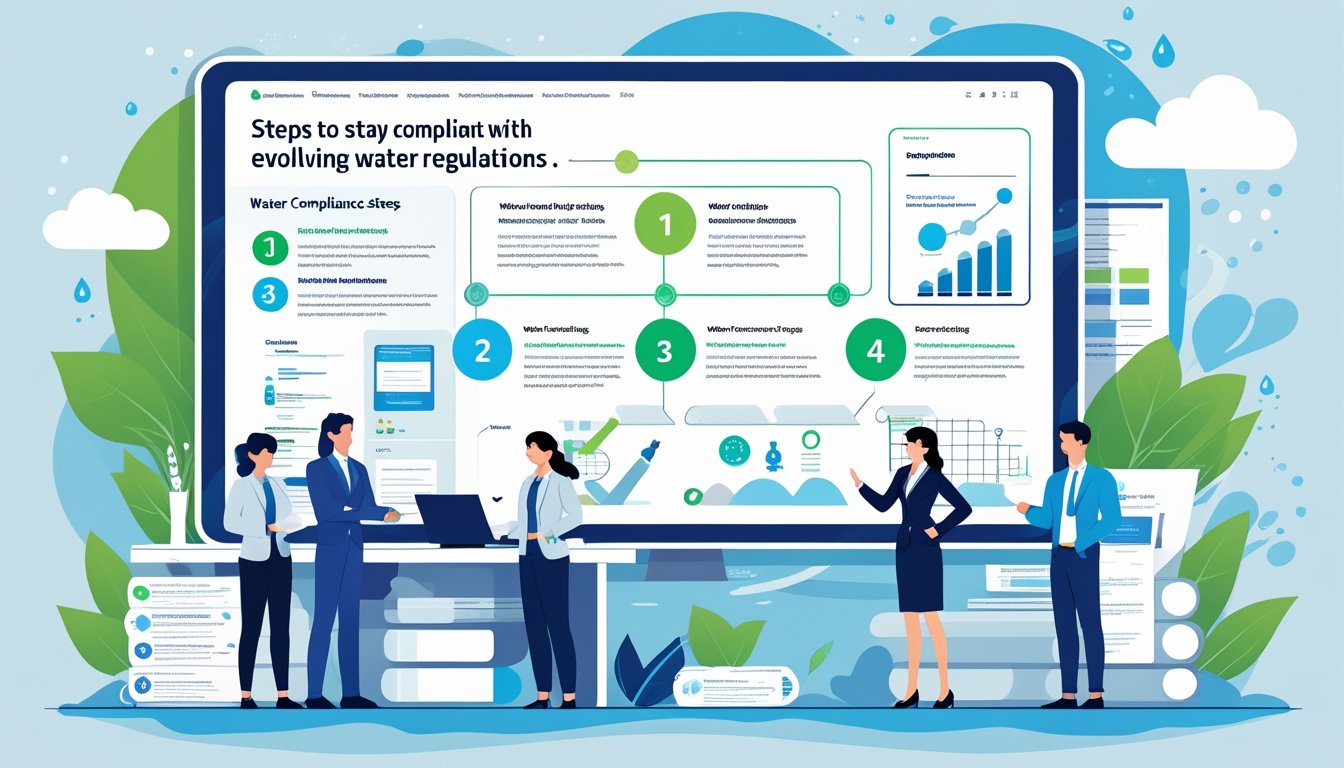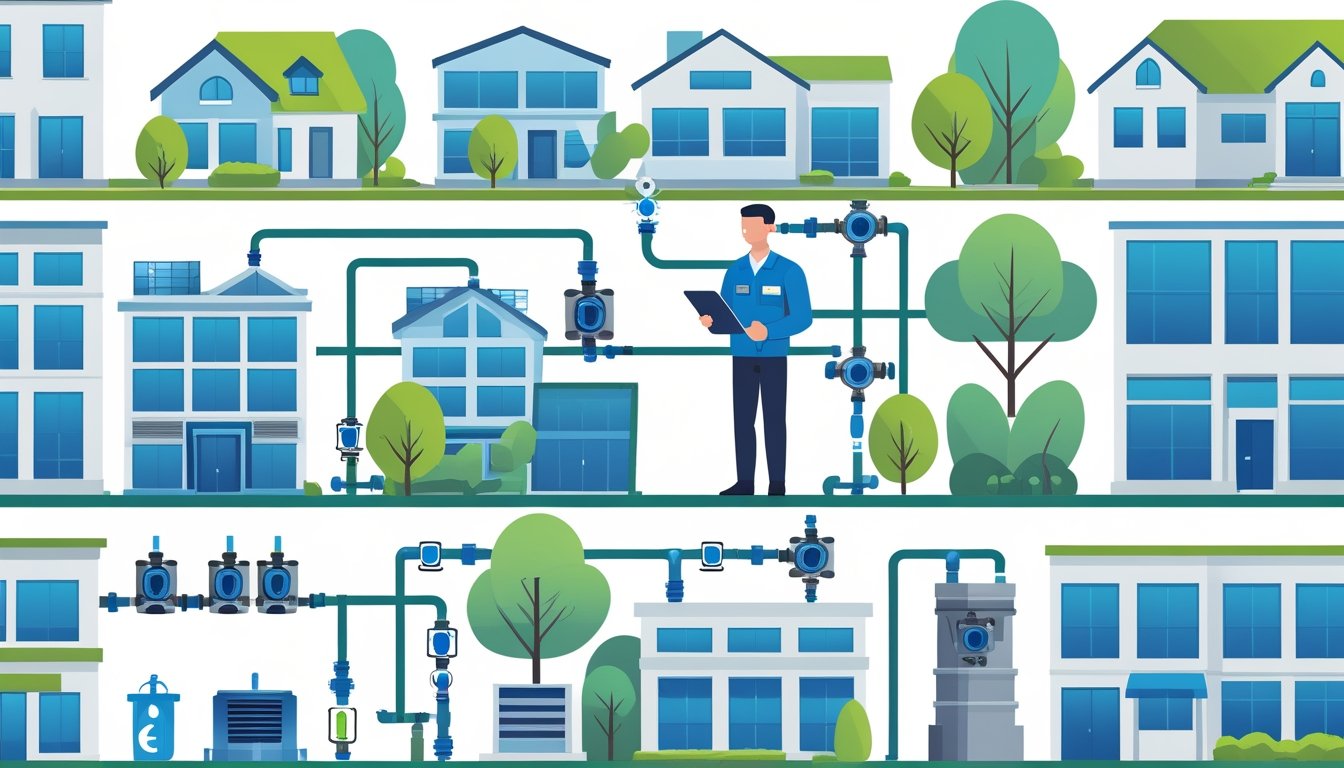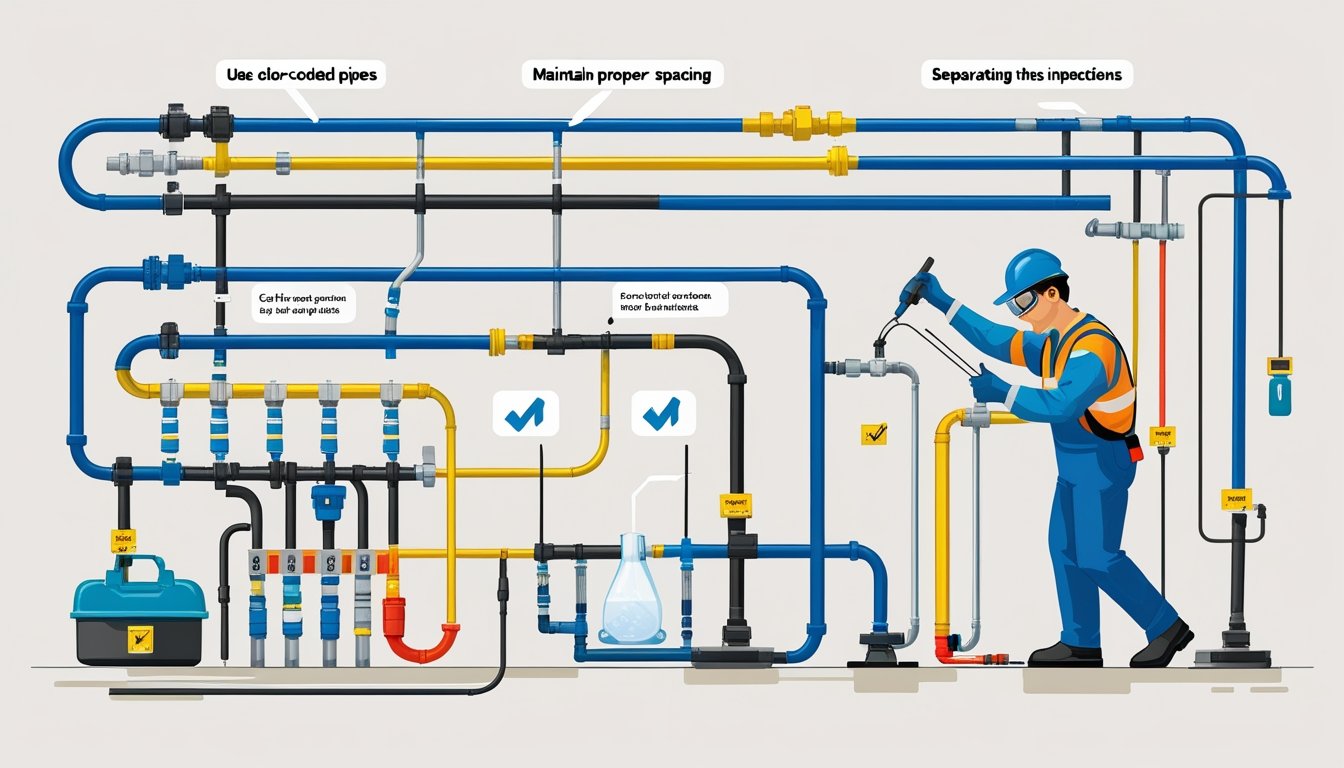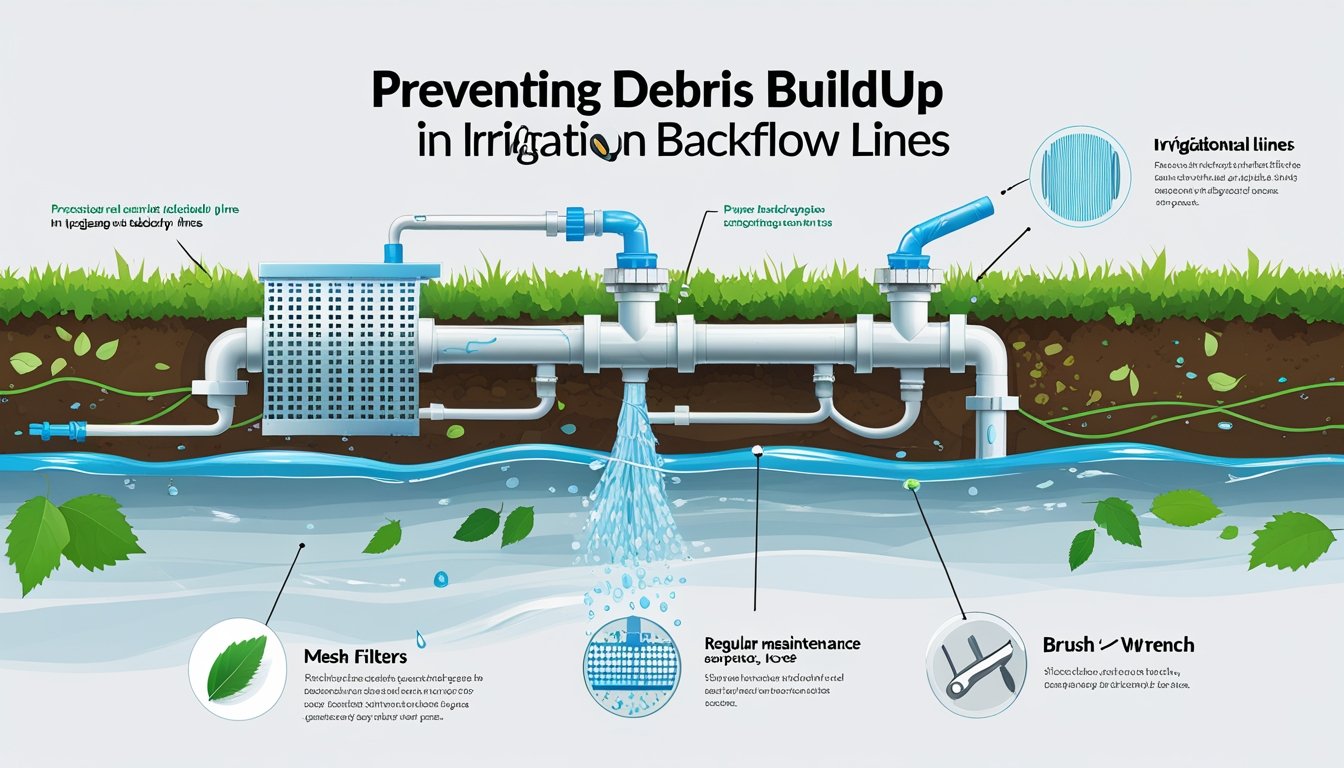If you’re wondering whether backflow preventers can be repaired or replaced, the answer’s yes—both are on the table, depending on what shape your device’s in. Backflow preventers can often be fixed by replacing worn parts or making repairs when issues like leaks or valve failures pop up. But if the device is super old or badly damaged, swapping it out for a new one is usually the smarter, safer bet.
Regular annual testing is key to catching problems early and making sure your system stays up to code. At Pacific Backflow, we serve all of San Diego County with testing, repairs, and replacements to keep your water safe and your system running.
You don’t have to sort out backflow headaches on your own. Whether it’s a quick fix or a total replacement, having a responsive expert makes things a lot less stressful. Protecting your water means acting fast when something’s off—and we’re here to help you get it done.
Understanding Backflow Preventers
Backflow preventers are the unsung heroes that keep dirty water out of your clean water supply. If you know how they work, the different types, and the common issues they face, you’re already ahead of the game.
Purpose and Importance of Backflow Preventers
Backflow preventers keep your drinking water from getting contaminated. They make sure polluted water—stuff with bacteria or chemicals—doesn’t sneak back into your clean supply. That matters a lot if your plumbing connects to things like irrigation or industrial lines.
Without these devices, pollutants could end up in your home or business water. That’s not just gross; it’s a serious health risk and can get you in trouble with the law, since water districts usually require backflow preventers. So, keeping yours in good shape protects both your health and your legal standing.
Types of Backflow Preventers
You’ll see a few main types out there, each with its own job:
- Atmospheric Vacuum Breaker (AVB): Mostly for irrigation. It stops back-siphonage but has to sit above ground and can’t be under constant pressure.
- Double Check Valve Assembly (DCVA): Good for low or moderate risks, like home sprinkler systems.
- Reduced Pressure Zone (RPZ) Valve: This one’s for high-risk setups with possible toxins. It gives the strongest protection, but it’s more complicated and pricey.
The right type depends on your system and what your local codes say. Testing now and then helps make sure it’s still working as it should.
Common Problems in Backflow Preventers
These devices aren’t immune to trouble. Over time, you might run into:
- Leaks: Usually from worn seals or junk inside the valve.
- Corrosion: Metal parts can rust, especially if the unit’s old.
- Clogs: Dirt and debris can block things up.
- Faulty Installation: If it wasn’t put in right, it’s probably not going to work right.
Notice weird water color, leaks, or pressure drops? That’s your cue to check the backflow preventer. Quick action keeps you out of trouble.
Pacific Backflow handles testing, repairs, and replacements all over San Diego County.
Signs Your Backflow Preventer Needs Attention
Your backflow preventer will usually let you know when there’s a problem. If you know what to look for and why routine checks matter, you can dodge bigger headaches.
Recognizing Signs of Failure
Keep an eye out for leaks, odd water color, or a sudden drop in pressure near your backflow preventer. Weird sounds? That’s another sign something’s off. Debris and worn parts—like seals or springs—often cause these issues.
If your device fails a test or doesn’t pass inspection, it’s time for a repair or maybe a replacement. Visible leaks or steady dripping are big red flags. The sooner you spot these, the easier your fix.
Health and Safety Risks
If your backflow preventer isn’t working, contaminated water can flow back into your drinking supply. That’s a real health risk—nobody wants chemicals or bacteria in their tap.
A busted preventer can also mess up your plumbing over time. Dealing with leaks or broken parts right away keeps your water safe and your system in good shape.
Routine Inspection Recommendations
Get your backflow preventer checked by a pro every year. These inspections catch worn or busted parts before they turn into major problems.
Pacific Backflow offers quick, reliable testing and repairs all over San Diego County. They’ll test your device, fix leaks, and make sure you meet local safety rules. Staying on top of inspections isn’t just smart—it keeps you compliant.
Repairing Backflow Preventers
Fixing a backflow preventer can save you cash and keep your system legal. Lots of leaks and inner problems can be solved by cleaning or swapping out worn parts. Knowing when a repair will do the trick—and when to call in a pro—matters for your water safety.
When Is Repair Possible?
You can usually repair the device if the problem’s minor—like a small leak, debris, or a tired valve. If water’s leaking from the weep hole, a good cleaning or a new part might fix it. But if you see cracks or heavy rust, repairing probably won’t cut it.
If your preventer fails a test but isn’t badly damaged, a repair might bring it back to life and save you money. Catching problems early makes repairs more likely to work. Just make sure you’re following your local codes.
Common Repair Procedures
Most repairs start with a look-over for leaks or rust. Then, you take the device apart, clean out any gunk, and swap in new springs, seals, or check valves. After putting it back together, you test it to make sure everything’s fixed.
You’ll want the right tools so you don’t make things worse. Sometimes, you’ll need to order special parts depending on your model.
Choosing Professional vs. DIY Repairs
If you’re handy with plumbing and have the right tools, you might handle small fixes like cleaning or swapping a seal. But let’s be honest, since these systems protect your water, mistakes can lead to contamination or failed inspections.
Calling a pro like Pacific Backflow means repairs meet safety standards. Their certified techs can spot tricky problems and fix them fast. They’ll also handle any required testing and paperwork.
DIY might seem cheaper at first, but if you miss something, you could be in for bigger bills or trouble down the road. Professionals in San Diego County offer reliable repairs that keep your water safe.
Replacing Backflow Preventers
Sometimes, replacing your backflow preventer is just unavoidable. Picking the right device and knowing when to swap it out keeps your water safe and your system up to code. You’ll want to spot the signs that replacement is needed and know what the installation process looks like.
Signs Replacement Is Necessary
Think about replacing your backflow preventer if you’re dealing with constant leaks or bad water quality. Failing regular tests or having an old device with worn-out parts are also big warning signs.
If you see discolored water, low pressure, or leaks around the unit, it’s probably time for a new one. And if you’ve had to repair it more than a couple times, replacing it usually saves money in the long run.
Quick action keeps your system safe and avoids bigger headaches.
Selecting the Right Replacement Unit
Choosing the right preventer depends on your property and local rules. You’ll want a unit that’s certified for your area and sized right for your plumbing.
There are models for homes, businesses, and industrial setups. Make sure your new unit meets all local codes so you don’t fail future inspections.
If you’re not sure which one to get, a pro like Pacific Backflow can help you pick a reliable, code-compliant unit.
Steps in the Replacement Process
First, turn off the water and drain the system. Then, carefully remove the old preventer without wrecking the pipes.
Install the new unit, following the manufacturer’s instructions and local codes. After that, test the system to make sure it works and passes inspection.
Professional techs handle all the details, including permits. Pacific Backflow offers full replacement services and makes sure your system stays safe and legal.
Regulations and Compliance Considerations
When you repair or replace your backflow preventer, you’ve got to follow the rules—otherwise, you risk fines or unsafe water. These regulations come from local and national plumbing codes, and after any work, inspections are usually required.
Local and National Plumbing Codes
Your backflow preventer has to meet plumbing codes set by your city, county, and sometimes national standards. These codes say how often you need to test and maintain your device—usually every year. They also spell out what kind of devices and repairs are allowed.
Skip compliance, and you could get fined or lose water service. Devices and parts must meet your local water district’s rules. Some places even require certified technicians for repairs.
Pacific Backflow knows these rules inside out and can help you stay compliant in San Diego County.
Scheduling Post-Repair or Replacement Inspections
After any repair or replacement, you’ll probably need a follow-up inspection. This confirms the work was done right and the device works as required.
Usually, you book this with your water authority or a certified tester. They’ll check for leaks, proper installation, and operation. Once you pass, they file the report so your property stays compliant.
Don’t skip this step—it can cause water service problems. Pacific Backflow offers fast testing and handles the paperwork so you don’t have to stress about deadlines.
Preventing Future Backflow Issues
Keeping your backflow preventer in good shape is all about regular care. If you catch small problems early, you can avoid big ones. Testing helps you spot issues before they mess up your water.
Maintenance Tips
A little upkeep goes a long way. Clear away dirt or debris that could block the valve. Check for cracks or leaks and swap out worn parts right away.
Protect your backflow device from harsh weather with a cover or cage. That helps prevent damage from sun, rain, or freezing.
Try to get inspections at least once a year. Pros can catch stuff you might miss. If you use your preventer for irrigation or sprinklers, keep up with maintenance on those too.
Benefits of Regular Testing
Yearly testing keeps your backflow preventer in line with safety rules. It catches leaks or failures before they threaten your water.
Pacific Backflow in San Diego County offers fast, thorough checks and handles the paperwork, so you stay compliant.
Regular tests help you avoid expensive repairs or emergencies. They give you peace of mind that your water’s clean and your plumbing’s healthy. Isn’t that worth it?
Frequently Asked Questions
Trying to figure out repair costs, when to swap out parts, or what you can handle on your own? That’s all part of keeping your backflow preventer in good shape. You’ll also want to know where to get help and how often to check things.
How much does it typically cost to repair a backflow preventer?
Honestly, it depends on what’s wrong and which parts you need. Most repairs land somewhere between $100 and $500. If you’re dealing with something complicated or a big part needs replacing, expect the price to climb.
What are the signs that a backflow preventer needs to be replaced?
Watch out for leaks that just won’t quit, weird drops in water pressure, or if your device fails its annual test. Those are big red flags. If your backflow preventer’s old and doesn’t meet current codes, it’s probably time for a new one.
Can I repair a backflow preventer myself using a kit?
You can handle minor repairs yourself if you’ve got the right kit and follow the instructions. Still, cleaning or swapping out worn parts isn’t always as simple as it looks—one wrong move and you could make things worse. If you’re not confident, calling a pro is usually smarter.
Where can I find a professional to repair my backflow assembly nearby?
Try searching for certified backflow testers or repair services in your area. If you’re in San Diego County, Pacific Backflow is one option—they cover inspection, repairs, and make sure your system stays up to code.
What are the necessary parts for fixing a backflow preventer?
You’ll usually end up replacing diaphragms, seals, springs, or check valves. Sometimes, all it takes is clearing out some debris to stop a leak or get things working again.
How frequently should a backflow preventer be serviced or replaced?
Most folks recommend getting your backflow preventer checked and serviced once a year—seems like a good way to spot problems before they turn into something expensive. When it comes to replacing the whole thing, well, that really depends. If the test results aren't great, or if local codes say so, you might have to swap it out sooner. But honestly, with a bit of attention and regular care, these systems usually hold up for several years.

